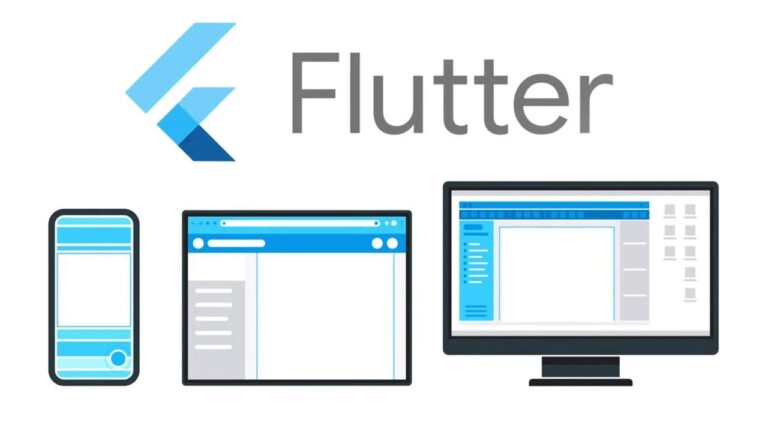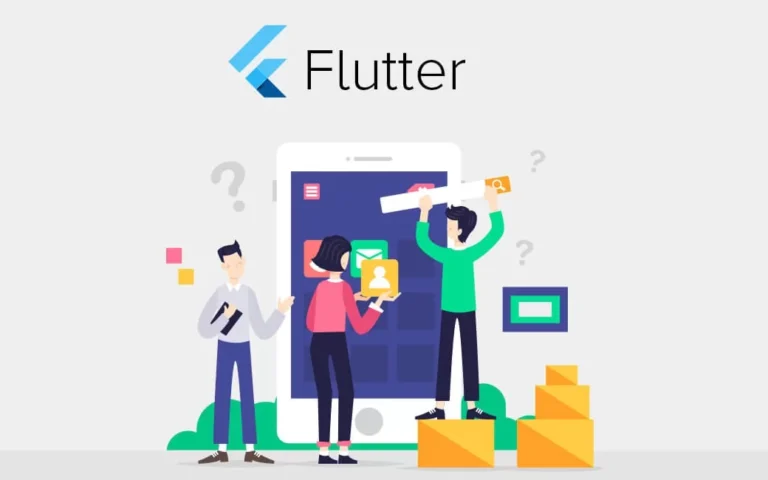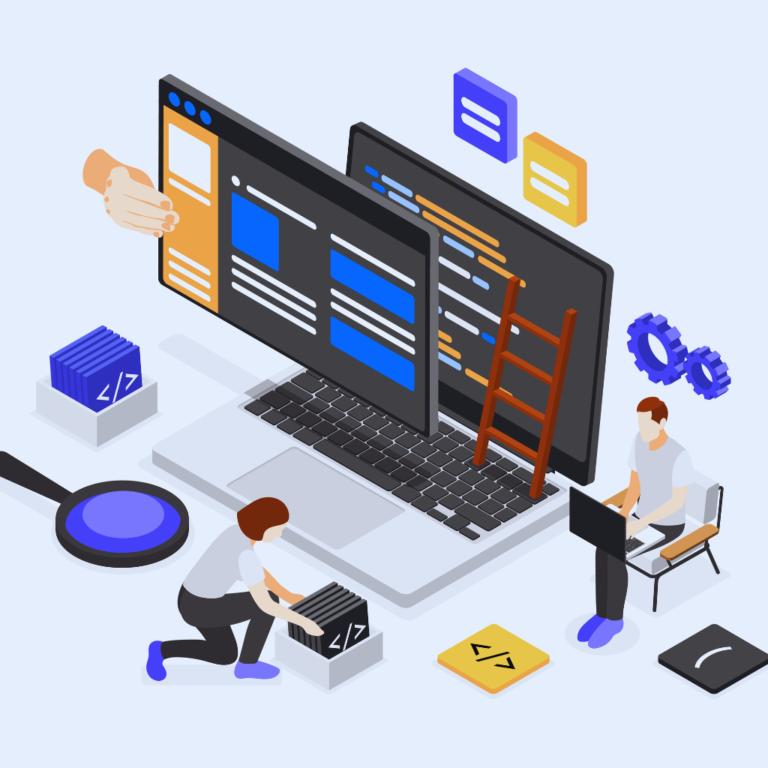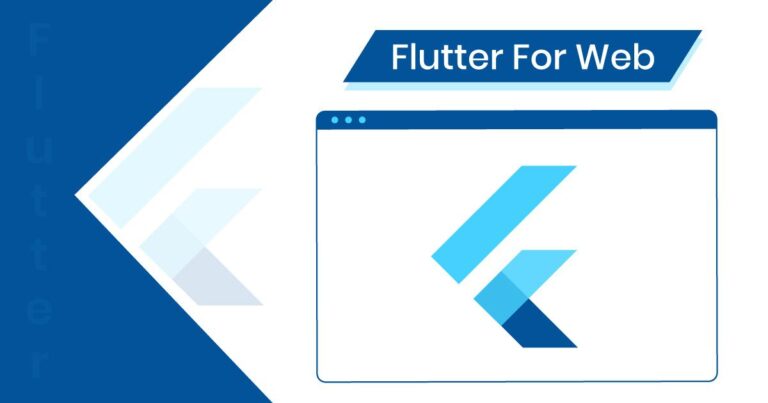Flutter for App and Web Development

With ongoing updates and the newest technology advancements, the face of modern software development is constantly evolving.
In light of these waves of change in web and mobile app development, how can any program survive? The secret is to embrace adaptability, and Flutter does just that. The way developers approach cross-platform web or app development is changing thanks to Flutter, Google’s open-source user interface software development framework.
Flutter is designed for newbies and at the same time for professionals. Flutter covers both basics and innovative concepts of the Flutter framework. Flutter is known to work on a single codebase unlike ReactNative, Kotlin, and Java which makes flutter different and easier from others. Flutter is a favored tool for iOS, hybrid, and Android developers due to its capacity to produce high-quality, native user experiences for both mobile and web platforms from a single codebase.
Bringing Together App and Web Development

Are you sick of creating different codebases for several platforms? We are aware of how time-consuming, resource-intensive, and labor-intensive web or app development can be. But calm down! With a single codebase that can be deployed to mobile and web contexts, Flutter has got you covered. Developers may quickly construct aesthetically appealing, quick, and native-like user interfaces across platforms because of its reactive framework.
For Better Productivity and Faster Development

Have you heard of the Hot Reload capabilities in Flutter? Without having to restart the application, this innovative feature enables developers to immediately see changes they make to the code on the app or website. Use of packages can enable your app to produce quicker. Packages can make your app richer but not at the expense of causing the app to slow down and go outdated. Icons are another feature that yields productivity. It helps in making your UI become attractive and to stand out, also giving pictorial clarity to the users. There’s a uniqueness Icons offer to your application that makes it a lot different from other apps. Snippets and plugins can save you from the tiresome writing that is repetitive and boring. This feature can save you some keystrokes and increase productivity. They are templates that enable you to enter repeating code patterns. We are on the constant look out for ways to increase productivity and leveling up on our development process. This is enabled with the Flutter hot reload feature. The best advantage flutter offers is how it immediately reflects the changes in code we make. Thus, the processing time is reduced, helping the developers to keep experimenting with different codes simultaneously in order to see the conclusion it provides.
As a result, mobile app development sessions can be debugged, experimented with, and fine-tuned quickly. So, if you want to boost productivity, go for Flutter.
Seamless and Consistent User Experience

Flutter operates the same way on any platform. It offers a comprehensive selection of editable widgets that follow Google’s Material Design guidelines. And the outcome? A unified and aesthetically pleasing user experience across all platforms and devices. Arranging and customizing widgets determines how your code is developed and looks. Flutter is intended to utilize Google’s Material design language, which is a well-known plan language for mobile applications. All things considered, developers who know about Material design will find it simple to make lovely and natural points of interaction utilizing Flutter.
Material design underlines the utilization of realistic surfaces, like pieces of paper or layers of ink, to make a tactile and distinctive user interface. You have the adaptability to choose color roles for surfaces and surface containers. These jobs are autonomous of rise and permit you to characterize containment regions as per your wish. For instance, modals and extended navigation menus are regularly used to address particular units of information.
Additionally, Flutter’s widget-centric architecture allows Android developers to construct their own unique widgets. As a result, they can easily create captivating interfaces that are specifically tailored to the needs of their app.
Flutter’s Widget based architecture
The widget system on which Flutter is built enables developers to quickly and easily construct intricate user interfaces. widgets are reusable UI components that can be altered to fit the necessities of the application. flutter follows a progressive structure, or hierarchical structure where widgets are settled inside one another to build the UI. Each widget can contain other widgets and represents a component of the UI. Understanding the widget hierarchy will help you coordinate and construct your plans proficiently. flutter gives strong theming and styling choices to keep up with predictable visual feel across your application. You can characterize color schemes, typography, and other visual properties utilizing the theme framework. Moreover, flutter upholds a rich arrangement of styling choices for individual widgets, like padding, margins, shadows, and borders.
As a UX/UI developer, having a fundamental understanding of Flutter’s trying and troubleshooting tools is helpful. Learn about tools like the Flutter Driver, which enables integration testing of user interactions, and the Flutter Inspector, which enables you to inspect the widget tree and debug layout issues.
Flutter offers navigation widgets like navigator and route to oversee screen advances and application navigation. Creators can make visual portrayals of screens and characterize the stream between them, guaranteeing a smooth and natural user experience.
Access to Native Features and APIs

Are you seeking a software tool for iOS, Android, or hybrid app development that can guarantee both effectiveness and grace? You can rely on Flutter. It enables easy integration with built-in functions and APIs on the device. communication between a Flutter application and native code can be valuable in different situations, for example, when you need to get to platform-specific highlights or coordinate with existing native libraries. There are multiple ways of accomplishing this communication, yet one of the most well-known is using a package called Pigeon.
This implies that regardless of the platform, developers can access features like the camera, location services, sensors, and more. Now that you know how the Flutter webpages and applications look good and work properly all at the same time.
Ease Your Web Development With Flutter
Flutter for web is an extension of the Flutter Framework that enables developers to use the same database in order to make apps that run natively on the web. It has an extensive widget library and responsive architecture for web app development. Flutter for web provides us a wide range of features such as
- a single codebase that enables a unified development process.
- Rich and customizable widgets enable us to create UI designs that are customizable and responsive.
- Flutter mainly ensures performance and compatibility across various web browsers available today.
- Hot reload as we mentioned above, provides the advantage in web development, which helps in increasing the developer experience.
Although Flutter initially rose to prominence as a framework for creating mobile applications, it has since expanded its scope to include the web.
Web apps may benefit from the same benefits of code reuse, quick development, and a consistent UI experience thanks to Flutter for web development. Developers no longer have to worry about writing numerous codes for various platforms thanks to Flutter.
Therefore, pick Flutter for a smooth virtual experience.

Use of Animation
Flutter is able to create interfaces that are both engaging and dynamic thanks to Flutter’s powerful animation system. With Flutter’s animation framework, creators can make custom movements that respond to client input, for example, button presses or screen advances. Animations are a fundamental piece of building the UI of a mobile application to feel pleasant and smooth to the client. An app’s user-friendliness is enhanced by its interactive features and fluid transitions. On the other hand, poorly created animations can give the app a broken and boring look. Hence, learning the basics of Animations in any structure is a fundamental stage towards conveying an important user experience.
Flutter animations are a strong part of the framework. The flutter gallery application itself shows some astonishing application demos made with Flutter. The extraordinary thing about going through these basics is that the design remains similar even across most complex animations and learning this construction will give us a pathway to making astonishing UIs.
Flutter upholds Lottie animation, which is an open-source library for adding animations to versatile mobile applications. The vector-based Lottie animations are simple to incorporate into Flutter applications. They are made utilizing Adobe after effects, and afterward sent out as JSON documents that can be delivered locally in Flutter.
Flutter: Giving an Edge to App and Web Development

By offering a simple and effective method for developing cross-platform applications, Flutter is revolutionizing the field of web and app development. It can speed up the development process, maintain consistency between platforms, and access native functionality. One of the fundamental benefits of using Flutter for web advancement is that you can reuse the vast majority of the code and rationale that you have composed for your mobile applications, and convey them to the web with minimal changes. This can save you time, cash, and assets, and guarantee a reliable user experience across various devices. One more advantage of Flutter for web development is that you can use the power and execution of Flutter’s rendering engine, which utilizes Skia, a 2D illustrations library, to draw each pixel on the screen. This implies that you can make mind boggling and dynamic web applications that run as expected and quick. So, Flutter is your best option if a remarkable user experience is what you’re after. Why then wait?
Enter the world of Flutter now to experience seamless web and mobile applications. To conclude, Flutter app development is on its journey to change the total view of mobile apps. Native performance, cross platform efficiency, and a user-friendly environment is Flutter’s greatest commitment of all time. With the development of Flutter, it’s not only becoming a trend but also a fundamental shift to a more easy, collaborative and incredible development process. New or professional developers, doesn’t matter, open your eyes to a new realm of opportunities and possibilities, make your vision come true with Flutter
Conclusion
It’s critical to stress how each ideal item has explicit necessities and interesting users. This ought to be the fundamental subject to decide if Flutter is the right solution. Flutter has developed significantly and will probably keep on developing into one of the most involved solutions for advancement. However, other native solutions may be required for some products. Flutter’s cross-platform app design capabilities provide UX/UI designers with a wealth of options. By embracing Flutter’s widget-based architecture, keeping up with consistency across stages, advancing for various screen sizes, utilizing custom widgets and animations, consolidating plan standards like Material design, and taking into account availability and localization, Developers can make excellent user encounters. By remaining refreshed with Flutter’s most recent developments and configuration patterns, developers can push the limits of their inventiveness and persistently work on their abilities. Flutter makes it possible for designers and developers to work together seamlessly, iterate quickly, and produce outstanding design outcomes.
Thus, in the event that you’re a UX/UI developer hoping to grow your viewpoints and make staggering cross-stage designs, embracing Flutter’s plan capacities is the best approach. Allow Flutter to engage you to make easy to understand interfaces that have an enduring effect on your clients.
To end it of in a brief manner, here are a few benefits flutter offers to you:
- Improved performance as flutter compiles ahead of time
- Hot reloading feature that enables developers to view changes made in real-time.
- Widgets optimized specifically for web browsers, making them faster and more responsive.
- Utilization of Google’s Material Design components, allowing developers to incorporate familiar app patterns into their work.
- Ability to create hybrid apps using flutter for web and mobile platforms.
- Faster development time due to code reusability. Easy scalability for web applications.
- a community that is so helpful!
Apps Ait: Shaping your Virtual Dreams into Reality
Are you ready to unleash the power of Flutter for your web and app development needs? Look no further than Apps AiT! As a leading mobile app development company, we use cutting-edge technologies to give life to your virtual ideas.
Our expert software developers are adept at creating powerful cross-platform applications that deliver exceptional user experiences. Whether it’s a mobile app or a web application, Apps Ait will transform your vision into reality.
Collaborate with us to unlock the full potential of Flutter and take your digital dreams to new heights.
